Permanent Makeup and Cosmetic Tattooing
Permanent makeup and cosmetic tattooing are becoming increasingly popular for those who want permanent makeup. To simplify their beauty routine. IBI Healthcare’s new service launch will go into all the details of permanent makeup from the basics to advanced.
It is also known as micro-pigmentation. Furthermore, refer to cosmetic tattoos, tattooing permanent makeup salons, permanent cosmetics, and semi-permanent makeup. These terms are used interchangeably but they all mean the same thing.
Additionally, the use of tattoo techniques to enhance facial features. This cosmetic tattoo procedure applies pigments to the dermal layer of the skin to mimic makeup.
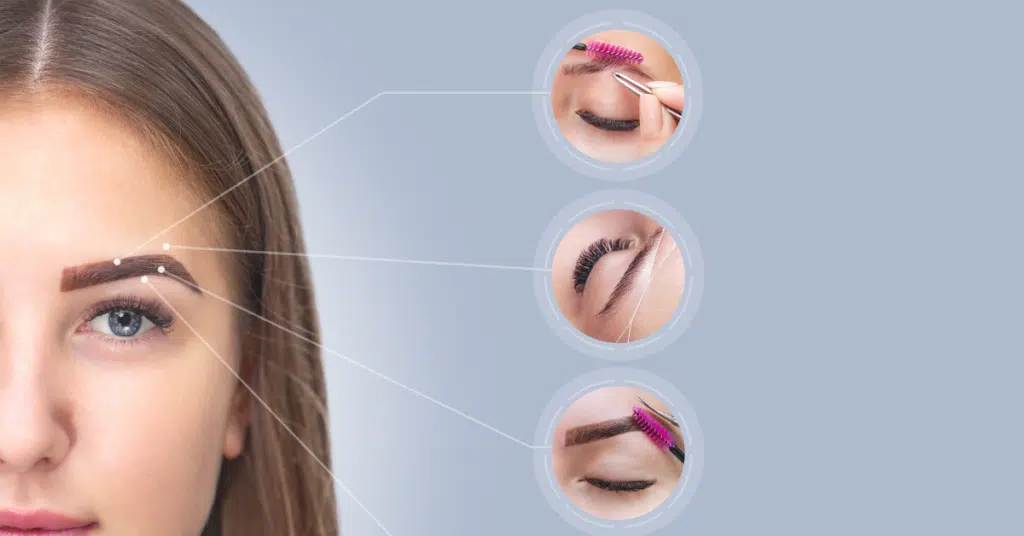
Popular areas are eyebrows, eyeliner, and lips including lash enhancement or lip blushing. Techniques like microblading use fine needles to create hair strokes that mimic natural eyebrow hairs, resulting in fuller, natural-looking brows.
Is Permanent Makeup Worth It?
For many the permanent makeup procedure is a time-saving solution that boosts confidence. It eliminates the daily application of makeup and gives a consistent look. Testimonials from people who have had the permanent makeup procedure done say it’s convenient and aesthetically pleasing.
It means a permanent cosmetic makeup artist or tattoo artist using various cosmetic tattooing techniques to mimic traditional makeup. To enhance natural beauty, cosmetic tattoos resemble makeup. Subsequently, give a polished look to those with allergies to conventional makeup or active lifestyles.
How Does Permanent Makeup Work?
Initial consultation to determine the look. Then an initial appointment for the treatment where pigment implanted with a fine needle. However, touch-ups may require.
However, permanent makeup can be removed with a laser or saline. But these methods are costly and time-consuming and results may vary.
What are the Benefits of Permanent Makeup?
- Consistency – Looks flawless even in water or sweat.
- Allergy Friendly – For those allergic to traditional makeup.
- Long Lasting – A semi-permanent solution for several years.
- Medical – For people with alopecia, vitiligo, or undergoing chemotherapy.
- Time Saving – Reduces daily makeup routine time. No need to apply daily.
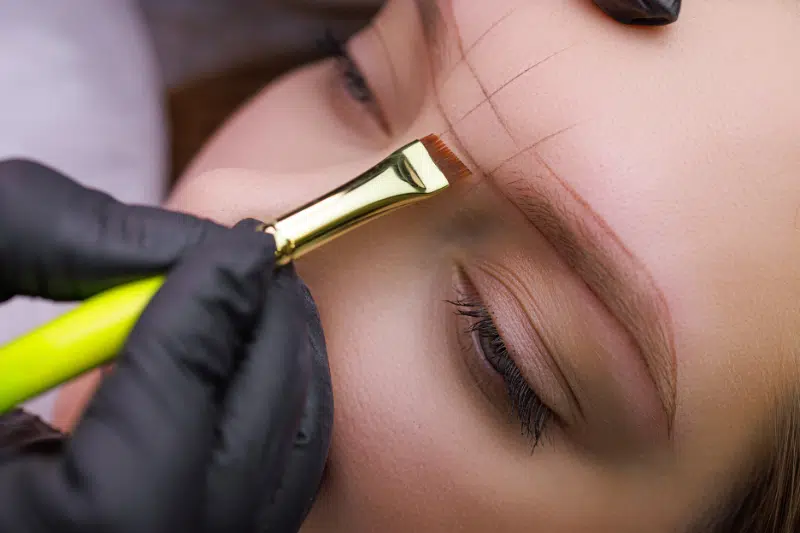
Types and Popularity of Permanent Makeup
What’s the Most Popular Permanent Makeup?
Eyebrows are the most popular, and microblading and ombre brows are the most in demand. Eyeliner, permanent lip color, and hair color also catch up with the trend. Full-face permanent makeup includes eyebrows, eyeliner enhances eyebrows, and fuller lips. It’s a full, permanent makeup look that lasts.
Permanent makeup can be applied to any part of fair skin, of the skin tone, face, eyebrows, eyelids, and lips. It enhances natural beauty and is a semi-permanent makeup solution.
What are the Most Natural-Looking and Best Method for Permanent Eyebrows?
Microblading is known for natural-looking brows. This technique uses very fine needles. To create hair stroke that look like real hair and give a realistic look.
Furthermore, it is the best method for natural-looking brows. But ombre brows and nano brows are also popular for their unique style and longevity. It is different from other Permanent Makeup Techniques.
Microblading is manual hair-like strokes on the skin, while other techniques like shading or ombre use a machine to apply a soft powdery finish. Microblading is natural looking, shading is more defined.
What are Ombre Eyebrows?
They have a gradient effect, the front of the eyebrows are lighter and get darker towards the tail. Giving individuals a soft powdery look.
What’s Popular or Hot in Permanent Makeup?
- Lip Blushing – To enhance lip color and shape.
- Eyelash Enhancement – Subtle liner to make lashes appear fuller.
- Combination Brows – Microblading and shading for a natural look with definition.
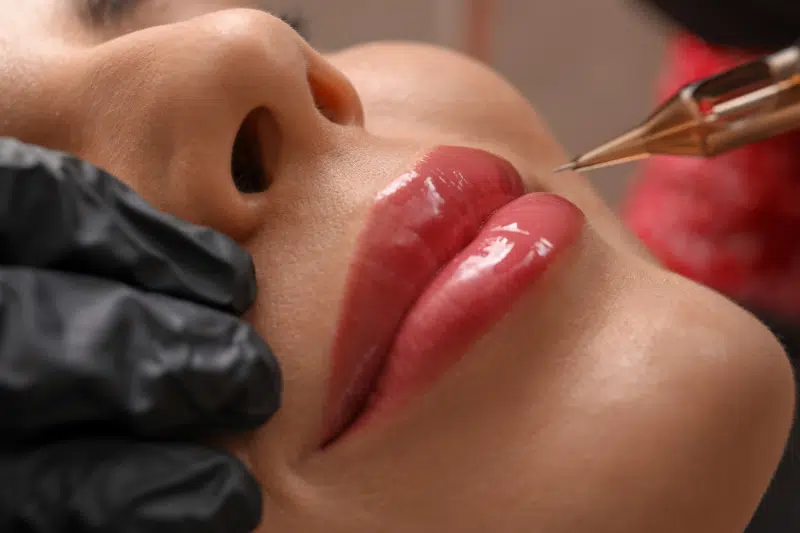
Procedure and Duration
How Long Does Permanent Makeup Last on the Skin?
Permanent makeup lasts 1-3 years on the skin. It depends on skin type, lifestyle, and aftercare. The initial color may fade over time. But the pigment can remain in the skin for several years and will require touch-ups to maintain the desired look.
With good aftercare and regular touch up or make-up, this type of personal style of semi-permanent, makeup can last up to 5 years but the color and definition will fade.
How Long Does Permanent Makeup Last on Brows?
Brow treatments like microblading last 12-18 months before a few touch-ups or make-up is needed. Its costs vary depending on skin type and aftercare.
How Many Sessions Are Required for Permanent Makeup?
Most permanent makeup procedures require at least 2 sessions. The initial application and a follow-up 4-6 weeks later to perfect the results.
What is the Process for Permanent Makeup?
- Consultation – Discussing expectations and choosing pigments with the artist.
- Application – Numbing the area and applying the pigment.
- Aftercare – Following instructions to ensure proper healing.
How Long Does it Take?
Time varies by treatment area. Usually 1-2 hours per session. However, the follow-up sessions may be shorter.
How Do I Prepare for the Session?
- Stay Hydrated – Drink lots of water.
- Allergies – Discuss your allergies or skin conditions with the artist.
- No Blood Thinners – Don’t take aspirin or drink alcohol a week before.
What is the Aftercare for Permanent Makeup?
- Use ointment as instructed.
- Protect the skin from direct sunlight.
- Keep the area dry for the first few days.
What Does the Healing Process Look Like?
- Scabs – May form small scabs, don’t pick them.
- Redness and Swelling – It goes away in a few days.
- Color Fading – Looks darker at first but will fade to the right color.
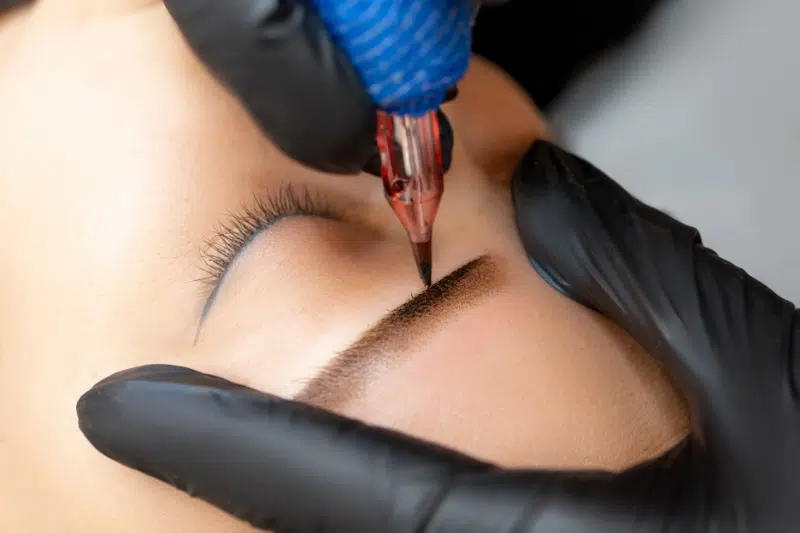
Comparisons and Alternatives
Microblading or Permanent Makeup? Which is Better?
Microblading and permanent makeup have their pros and cons. Microblading is fine hair-like strokes on the brows, natural looking. Permanent makeup is a solid technique and can be applied to lips, eyelids, and brows. Many prefer microblading for a natural look.
Permanent makeup might be better for those who want more defined and long-lasting results. Microblading is best for those with sparse brows who want a more natural appearance without enhancement, and permanent makeup for those who want a more dramatic look that lasts longer.
According to a 2022 survey by the American Academy of Micropigmentation. 70% choose microblading for brow enhancements because of the natural finish.
Is Permanent Makeup a Cosmetic Tattooing?
While both permanent makeup and cosmetic tattooing involve inserting pigment into the skin. Regardless, they are very different in technique and purpose. The Permanent makeup process uses specialized pigments that fade over time, usually 1-3 years. Whereas tattoos use ink that lasts a lifetime.
Users of cosmetic tattooing say that permanent makeup is less painful. Additionally, it has a quicker healing time than tattoos. The pigment placement is shallower in the permanent makeup process than in tattoos which is why it lasts shorter and is less painful.
The Society of Permanent Cosmetic Professionals says permanent makeup fades 1-3 years, tattoos last a lifetime unless removed by various laser treatments.
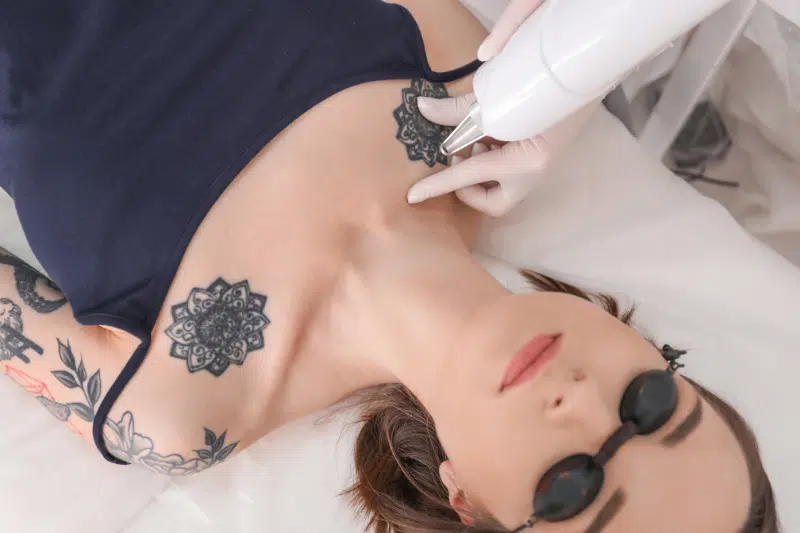
What are the Downsides of Microblading?
Microblading is popular but not without its cons. One big one is uneven fading. It can start to fade unevenly after 6 months and you’ll need to get a touch-up sooner than expected. This uneven fading can look patchy.
Microblading may not be suitable for oily, and skin tones. As the same pigment in the skin can spread and blur and you’ll end up with a less defined look over time.
According to the International Journal of Dermatology, 30% of microblading clients need touch-ups within 6 months. Because of the adverse effects of uneven fading.
What is the Downside of Permanent Brows?
Permanent brows are long-lasting. Although can look too bold or unnatural after the initial procedure is done. They look too dark at first and can cause some distress. But they may lighten up to a more natural shade after a few weeks.
Asthecians say the initial intensity of permanent brows is because of the fresh pigment which softens as the skin heals and the pigment settles.
The American Society for Aesthetic Plastic Surgery says 20% of clients complain about the initial darkness of their permanent brows. However, satisfaction increases as the pigment fades to the desired shade.
What is the Difference Between Microblading and Microshading?
Microblading and micro shading are both techniques for enhancing eyebrows but differ in their approach cosmetic technique and results. Microblading creates hair-like strokes, while microshading uses a stippling method. To enhance eyebrows and achieve a softer, powdered effect.
Individuals prefer microshading because it gives them a fuller, more defined look compared to microblading’s more natural color strokes. Dermatologists recommend microshading for those with sensitive or oily skin. As it tends to last longer and requires less frequent touch-ups.
How Do Powder Brows Compare to Microblading?
Powder brows and microblading offer different finishes for eyebrow enhancement. Powder brows provide a more filled-in, makeup-like appearance. While microblading offers a natural, hair-like look.
Moreover, powder brows may give bold, defined eyebrows that individuals always wanted without the need for daily makeup application. Powder brows are better suited for those with sparse eyebrows looking for a more defined shape and dramatic effect. Whereas microblading is ideal for natural enhancement.
What are the Pros and Cons of Various Permanent Makeup Techniques?
Understanding the pros and cons can help you choose the best option for your needs.
Microblading
Pros – Natural looking, great for sparse brows.
Cons – Needs frequent touch-ups, may fade unevenly on oily skin.
Powder Brows
Pros – Long lasting, bold looking, all skin types.
Cons – Looks unnatural at first, longer healing time.
Permanent Eyeliner
Pros – Defines eyes, and reduces daily makeup.
Cons – Risk of infection, swelling, discomfort.
Lip Blushing
Pros – Enhances lip color and shape, long results.
Cons – Swelling, uneven fading.
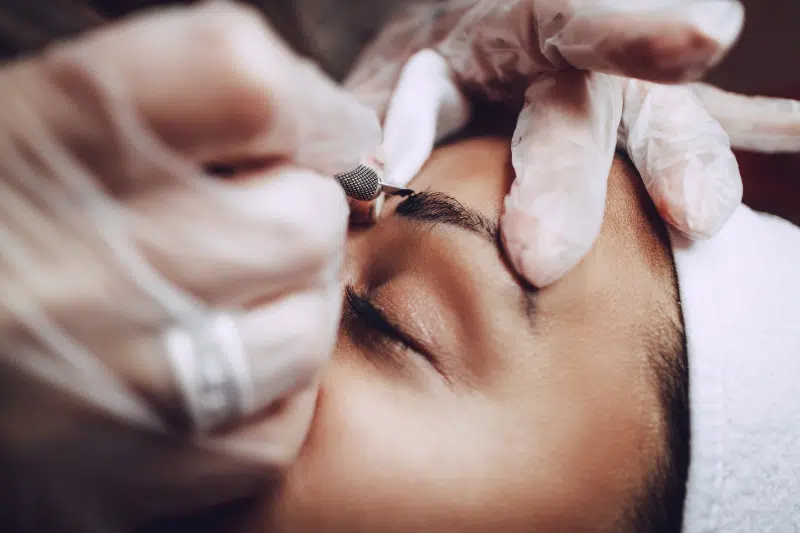
According to the American Society for Aesthetic Plastic Surgery, permanent makeup procedures have increased by 25% over the past 5 years and microblading is the most popular.
Pain, Safety, and Risks
How Painful is Permanent Makeup?
Permanent makeup is mildly uncomfortable, like getting a tattoo but less so. It’s often a mild scratching sensation. Although, numbing creams can reduce discomfort during the procedure.
Dermatologists say that pain tolerance levels vary depending on your pain tolerance, the area being treated, and the technician.
According to the American Academy of Dermatology. About 80% reported mild to moderate discomfort during permanent makeup procedures.
Who Should Not Get Permanent Makeup?
Not everyone is a good candidate for this type of permanent makeup. Certain medical conditions or skin types should be treated area cautiously.
Usually, dermatologists advise against permanent makeup if you have a history of keloid scarring which can cause complications. Also avoid permanent makeup if you have active skin infections, severe makeup allergies, or are pregnant.
The American Society of Dermatologic Surgery revealed. 15% of people should not get permanent makeup due to medical or skin conditions.
What are the Downsides of Permanent Eyeliner?
It is a quick way to enhance the eyes but has its downsides. It can cause swelling and redness for several days after a permanent eyeliner procedure. The initial color may look too intense but softens over time.
However, the delicate area around the eyes requires careful application to avoid complications like infection or pigment migration.
According to the American Academy of Ophthalmology. Only 10% of permanent eyeliner clients experience minor complications like swelling or infection.
Are There Any Health Risks with Permanent Makeup?
Permanent makeup is generally safe but there are some potential risks to be aware of. Some people report allergic reactions to the pigments used in permanent makeup. Rare but serious enough to require medical attention.
Dermatologists stress the importance of patch testing before the procedure and using high-quality, hypoallergenic pigments to minimize the risk of reactions.
The Food and Drug Administration (FDA) says adverse reactions to permanent makeup pigments are rare, less than 1%.
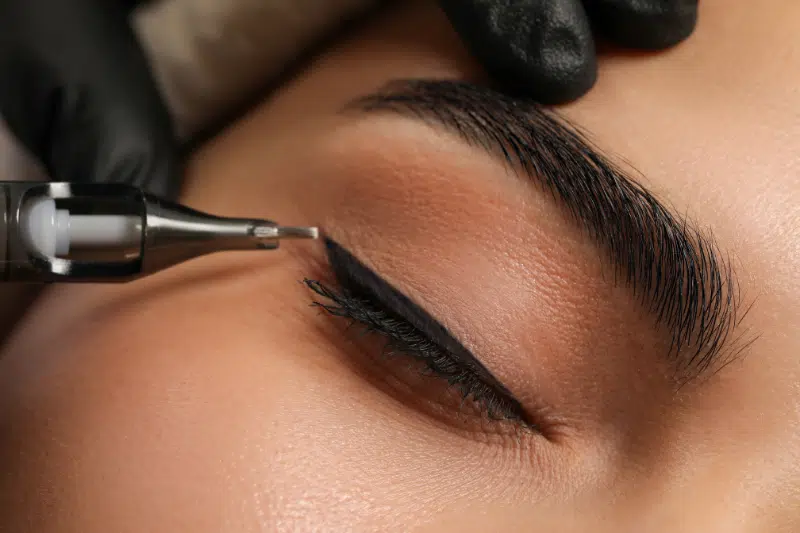
Best Practices and Aftercare
What are the Dos and Don’ts of Permanent Makeup?
When it comes to permanent makeup, individuals should consider dos and don’ts for best results and healing.
Dos
Follow Aftercare Instructions
Follow the instructions given to you by your technician. These are customized for your healing and pigment longevity.
Keep the Area Clean
Gently clean the area with a mild, non-alcoholic cleanser. This will prevent infections and promote healing.
Apply Recommended Ointments
Use any ointments prescribed to you to keep the area moisturized and aid in the healing process.
Protect from Sun Exposure
Use sunscreen once the area has healed. To further protect the pigment from fading due to sun exposure.
Don'ts
Don’t Pick or Scratch
Don’t pick, scratch, or rub the area. This can cause pigment and scar tissue loss, scarring, and infection.
No Makeup on the Treated Area
Don’t apply makeup on the area until it’s fully healed. This will prevent irritation and potential infection.
Avoid Water and Sweat
Keep the area dry for the first week. Avoid swimming, excessive sweating, and saunas.
No Harsh Skincare Products
Don’t use products containing retinol, acids, or other strong ingredients on the area until it’s fully healed.
Is it Worth it?
Deciding if it is for you is all about weighing the pros and cons. On one hand, it is a time saver. No more daily application saves you time in your beauty routine. Then, it requires no more smudging or reapplying throughout the day. Eventually, helps with the confidence boost. As many feel more confident with permanent makeup services and the extra features a permanent makeup service gives you.
On the other hand, it requires a long-term commitment to the look (1-3 years). Besides this, make sure you’re not allergic or have sensitivities to the pigments. Nonetheless, a patch test will help you determine this. Lastly, the results depend on the technician. Finally, choosing a reputable clinic is important to avoid bad results.
What to Avoid After Permanent Makeup?
To ensure proper healing and longevity of your permanent makeup, don’t use the following:
Retinol and Acids
Any skin care products with retinol, glycolic acid, and salicylic acid will irritate the area and cause premature fading.
Alcohol-Based Products
Avoid products containing alcohol. It will dry out and irritate the skin.
Exfoliants
Avoid physical and chemical exfoliants on the area to prevent irritation and pigment loss.
Heavy Makeup
Don’t apply heavy makeup on the area until it’s fully healed to prevent infection and irritation.
According to the American Academy of Dermatology, not using these products can reduce the risk of adverse reactions by up to 40%.
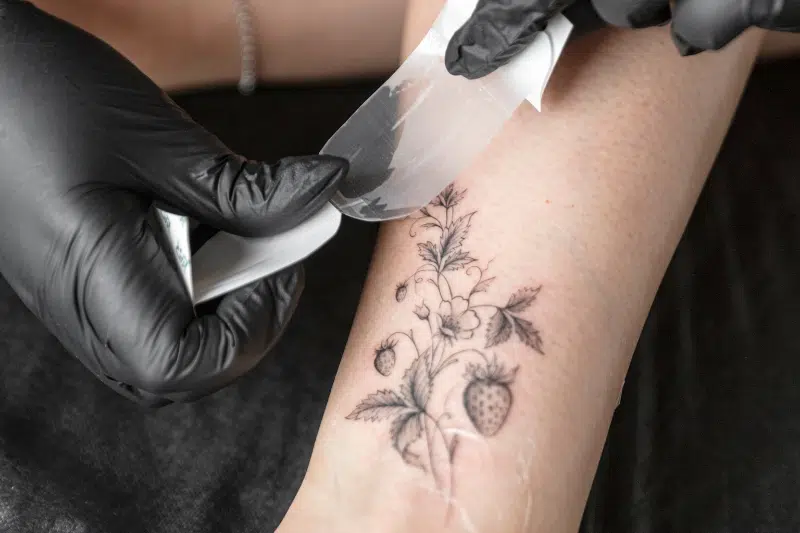
Procedure Consultation with a Permanent Makeup Artist
What to Prepare?
Proper preparation is key to a great cosmetic procedure.
Research
Research different styles and techniques to see what’s best for you.
Patch Test
Make sure you have a patch test to see if you’re allergic to the pigments.
Avoid Certain Medications
Don’t take blood thinners like aspirin or ibuprofen before the procedure to minimize bleeding.
Hydrate
Drink plenty of water in the days leading up to your appointment. To keep your skin hydrated and plump.
No Alcohol or Caffeine
Avoid taking alcohol or caffeine 24 hours before your appointment as they can make you more sensitive and bleed more.
The American Society of Dermatologic Surgery suggests that proper prep can reduce complications by 30%.
What to Expect During the Consultation?
A consultation is part of the full permanent makeup process.
Assessment
Your technician will assess your skin, and talk to you about your goals. To determine the best technique for you.
Color Match
A color match will be done to find the perfect pigment for your skin type, tone, and desired look.
Design
The technician will draw the design on your skin so you can see the final result.
Risks
Risks and aftercare instructions will be discussed so you’re fully informed.
Patch Test
A patch test may be done to see if you’re allergic to the pigment.
How Do I Choose a Reputable Permanent Makeup Professional and Studio?
Choosing the right healthcare provider professional studio is key to a successful and safe procedure. Further, ensuring you achieve the best possible results while minimizing potential risks too.
Check Credentials
Inquire if the technician is certified and has had proper training in permanent makeup.
Read Reviews
Look at online reviews and testimonials to see what previous clients have to say.
Visit the Facility or Studio
Book a visit to the studio to see how clean and professional it is.
Before and After Photo Gallery
Look at the aestheticians’ portfolios to see their work and style.
Consultation
Call us or schedule a teleconsultation to inquire further about permanent makeup or cosmetic tattooing procedures. As well as discuss your goals, concerns, and expectations. Nevertheless, browse through our procedures before and after photos. Additionally, explore our aesthetic procedures including Botox and Cosmetic Dermal Fillers.





